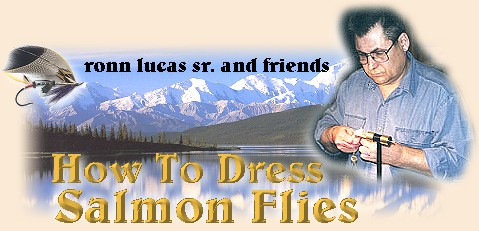Silver Monkey, a Charles DeFeo pattern
Monkey hair was used somewhat often in years
past but has been for all practical purposes,
unavailable in recent times. Silver Monkey
could be any of several Monkey species and
was used as a general term.
Years ago, I bought the tying stuff that belonged
to a gent who was giving up his tying. He had some
fantastic materials, books and other things. Since
everything was in boxes, all I knew was that I
was getting full value in the books, the boxes
of feathers and fur were surprises and a bonus
really. Since he had been a Salmon and Steelhead
Tyer in addition to Trout, he had collected some
special materials. In one of the boxes were a few
pieces of Silver Monkey fur. I don't use it for
my general tying but, thought you might like to
see some as used by DeFeo in his Silver Monkey.
I have included a few flies that are the same
pattern with the exception of the wings. Still
other hair could be used but, I find that Bobcat
is the best substitute on this pattern. I even
tried Deer hair with less than wonderful results
although, it may fish well. My point beyond showing
you the Monkey wings is to get you thinking where
substitution is concerned. Just because a pattern
calls for hair X doesn't mean it won't work with
some similar hair.
When substituting materials, we need to take into
account what the given materials behave like IN
the water. Many of the thin solid hairs like the
Silver Monkey, Bobcat, Fox, Wolf, Squirrel tail
and other fine textured hairs are very mobile
and soft in the water unlike bucktail and other
thicker hairs. So, when a productive pattern
calls for a specific material, we can't just
tie on the closest thing just because it looks
good. It may not fish well.
I am also showing you a different method for winging
a hair wing fly with a bullet proof wing. This is
the method that has become known as the Ed Hass Method.
Ed was a reclusive guy who lived in California and
in later years, on the Forks of the Salmon River.
There was a wonderful article on Ed in the premier
issue of Art of Angling Journal published
by The Complete Sportsman. The second issue contained
the method Ed employed in the flies he tied commercially.
Ed had hooks made to his specs and are no longer
available but, this wing will work on any loop eye
hook. He spread the return wire a little so the tie
in area of the wing rested between the wires rather
than on top. He also tied the wing in tips forward
and the wing was stood up in the last step. This
method makes the wing impossible to pull off and
allows for a very small head.
Let's get tying!
Silver Monkey, Charles DeFeo, tied by Ronn Lucas, Sr.
Hook: Partridge Salar REF CS14/1B #3 or choice.
Thread: Black UNI-Thread 8/0.
Tag: Silver oval UNI-Tinsel.
Tail: GP.
Butt: Black Ostrich.
Body: Flat silver UNI-Tinsel.
Rib: Silver oval UNI-Tinsel.
Throat: Grizzly hackle barbs.
Wing: Under wing is a strand of
yellow under a strand of green UNI-Floss topped
with a bunch of Silver Monkey hair.
Cheeks: Optional short JC nails,
I elected not to put them on this fly.
Instructions: Silver Monkey
1. Since the wing is tied in first in the Hass
method, we must determine how long the finished
wing should be. I use a pair of calipers to
measure the size. First, I temporarily tie in
the tail and take the measurement.
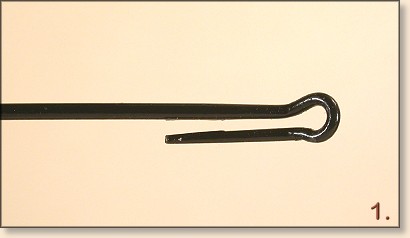
2. Insert the hair between the wires and secure
temporarily so you can transfer the measurement.

3. Tie in the wing and advance the thread in
close turns to the rear of the fly.
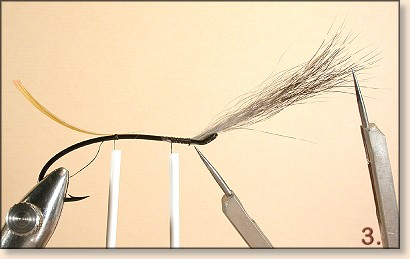
4. Tie in tag.
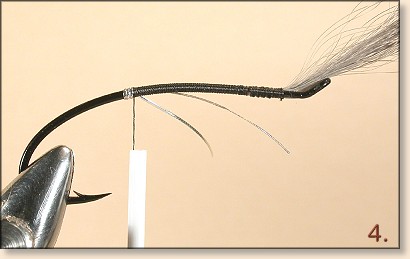
5. Tie in the tail.

6. Tie in the Ostrich.
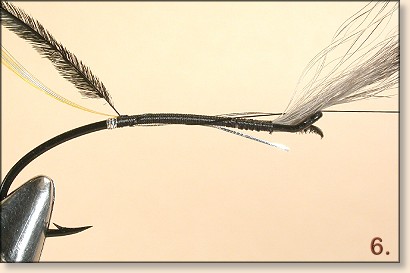
7. Apply the butt. Trim the tag tinsel close to
the butt and trim the ends of the butt.
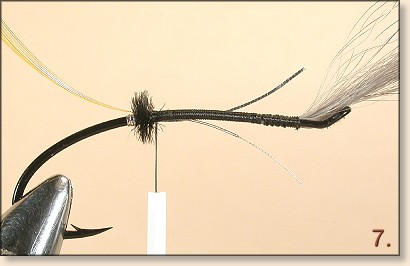
8. Tie in the silver oval tinsel rib.

9. Advance the thread in close flat turns to the
front of the fly but well behind the eye all the
time binding the waste end of the rib along the
far side of the hook. Pinch the flat mylar tinsel
with the thumbs and index fingers held together
to stretch and break the mylar. This will give
you a tiny tapered bit of tinsel to tie in as
shown.
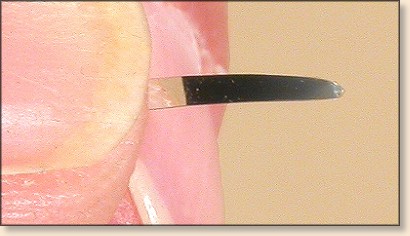
Flat mylar tinsel can be cut at an angle to provide
a small tie in area and that works well enough.
There is another method for achieving much the
same thing. Pinch the flat mylar tinsel with the
thumbs and index fingers held together close as
you can get them. Stretch and break the mylar.
This will give you a tiny tapered bit of tinsel
to tie in as shown. The further away your fingers
are, the longer the tapered end will be.
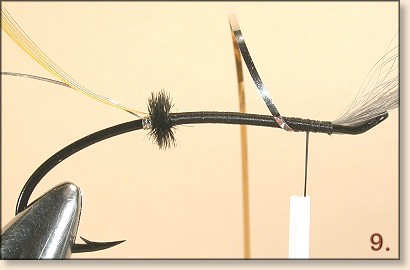
10. Apply the flat tinsel as shown.
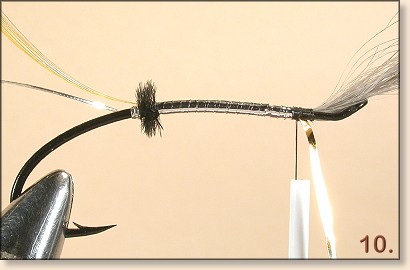
11. Wrap the rib in five even turns.
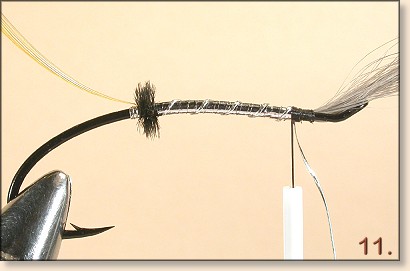
12. Tie in the two lengths of floss as shown.
These can be tied in one at a time or both at once.
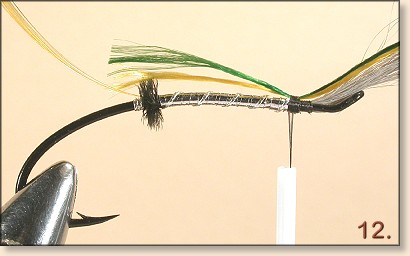
13. Tie in the hackle barbs as shown.
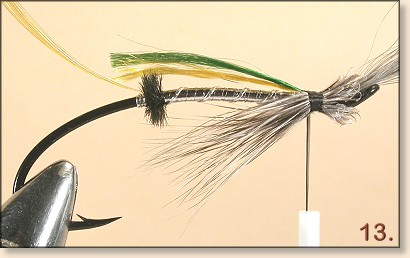
14. Pull the wing back and apply the head.
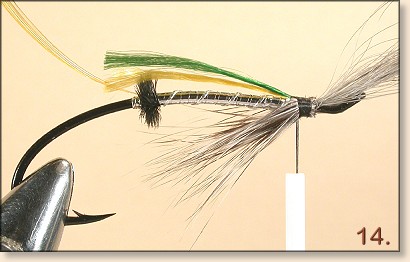
15. The finished fly.
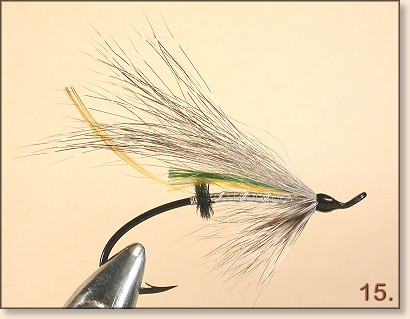
-
Here are more variations:
Silver Monkey - Bobcat
Silver Monkey - Deer Hair
Silver Monkey - Gray Fox
-
Happy Trails! ~ Ronn Lucas, Sr.
Back to Index
|
